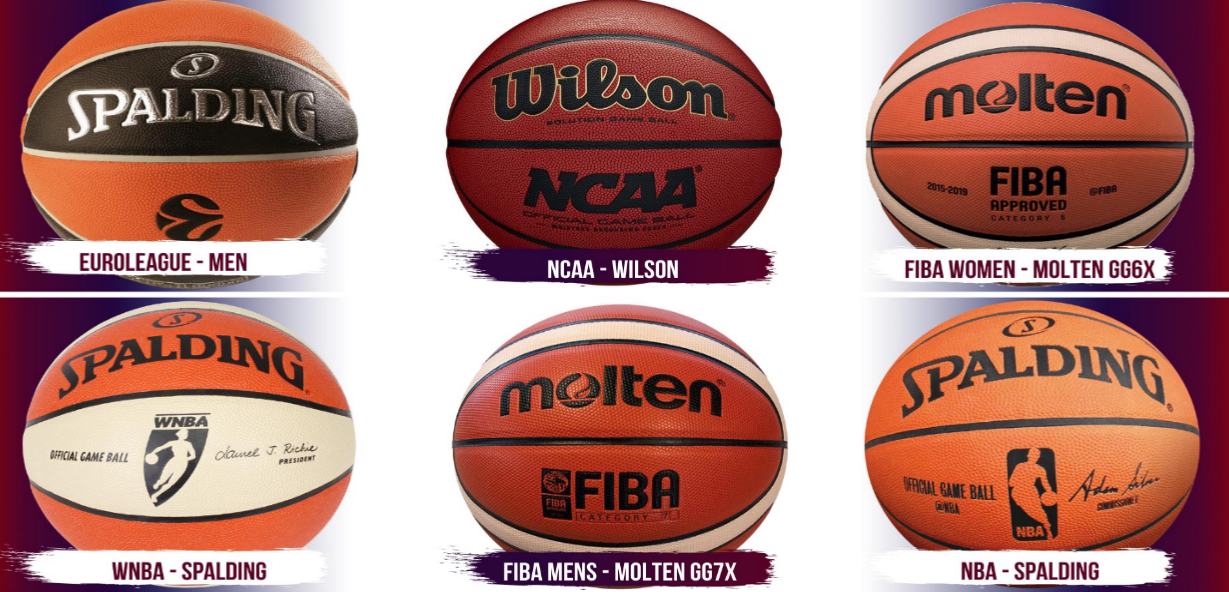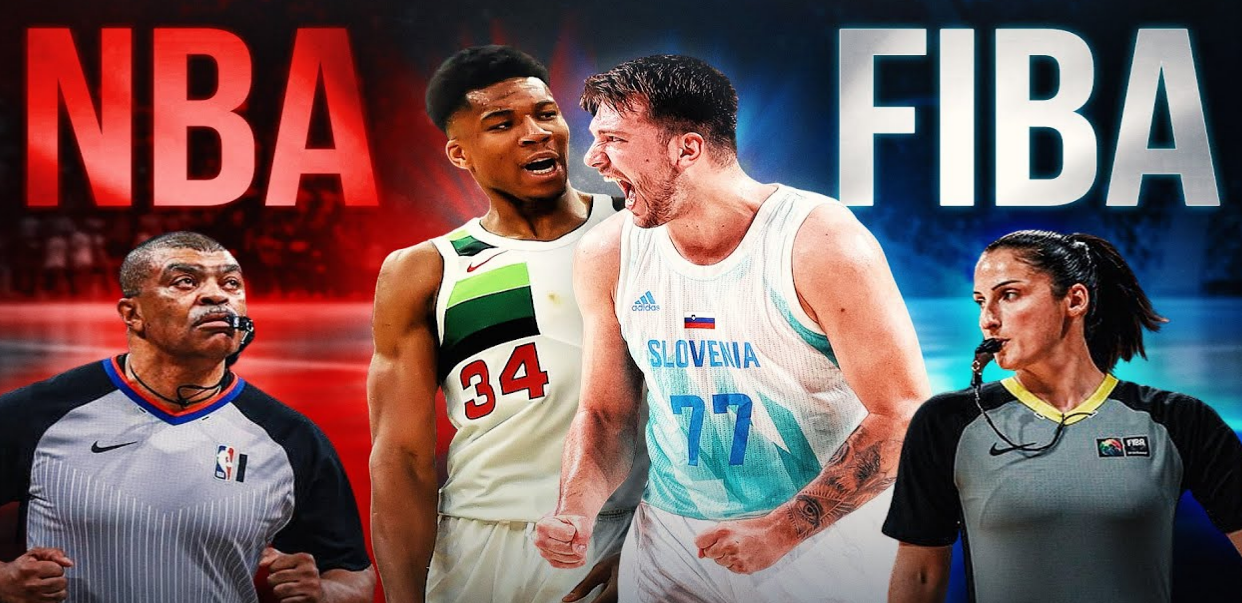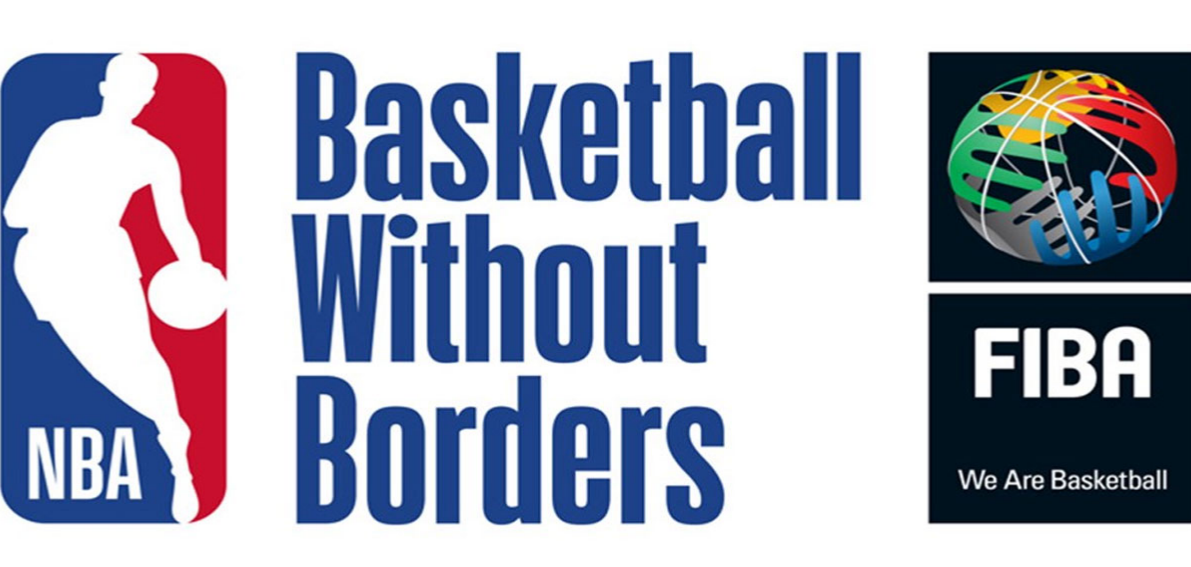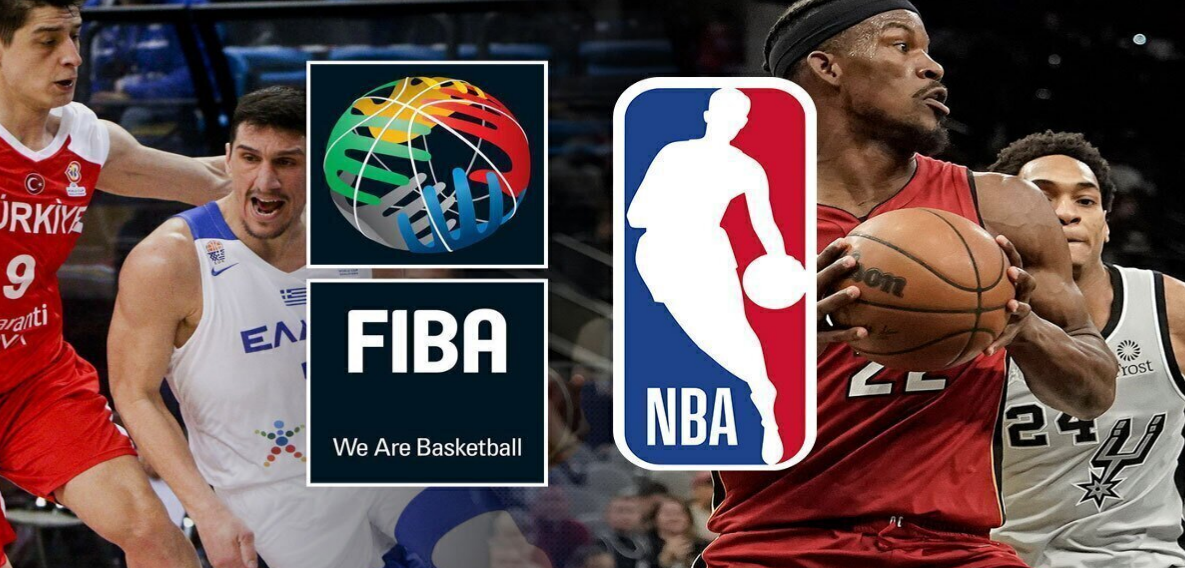FIBA is the global governing body for basketball, while the NBA is a professional basketball league in the U.S.
Historical Background
Origins of FIBA
The journey of FIBA began in 1936 in Geneva, Switzerland, when eight national federations decided to create an international basketball federation. These founding nations were Argentina, Czechoslovakia, Greece, Italy, Latvia, Portugal, Romania, and Switzerland. The initiative was driven by the need to have a unified body governing basketball, especially given the sport’s rising popularity. The first ever World Championship, now known as the FIBA Basketball World Cup, took place in 1950, solidifying FIBA’s role in the international basketball scene. Over the years, FIBA has expanded its reach, with more countries joining the federation and participating in various tournaments. The organization has also been instrumental in introducing basketball to the Olympics, starting with the 1936 Berlin Games. FIBA History Wikipedia

Evolution of the NBA
The NBA traces its origins back to 1946, initially named the Basketball Association of America (BAA). It was in 1949 that the BAA merged with its rival, the National Basketball League (NBL), to form the National Basketball Association. This merger was significant as it combined the strengths of both leagues and paved the way for a more competitive and exciting basketball landscape in North America. Icons like Bill Russell, Wilt Chamberlain, and later Michael Jordan, LeBron James, and Kobe Bryant have graced the NBA courts, elevating its status on the world stage. The NBA has also been pioneering in its outreach, with events like the NBA Global Games and the creation of the NBA Africa league, ensuring that its influence is felt well beyond the shores of North America. The league’s rich history is filled with unforgettable moments, from epic duels to game-changing plays, making it a cornerstone in the realm of professional basketball. NBA History Wikipedia
Organizational Structure
Governing Bodies of FIBA
FIBA, as the international governing entity for basketball, has a structured hierarchy to ensure the smooth functioning and global development of the sport. At its helm is the Central Board, which is responsible for formulating policies, rules, and the general direction for global basketball. Reporting to the Central Board are various commissions and committees, each focusing on different aspects of the game, like rules, players, referees, and coaching. FIBA also divides the world into five continental zones: Africa, Americas, Asia, Europe, and Oceania. Each zone has its own governing body that manages basketball affairs specific to its region. This zonal division helps FIBA cater to the unique needs and challenges of basketball development in different parts of the world. FIBA Organization Wikipedia
Administration and Management of the NBA
The NBA operates as a premier professional basketball league, and its organizational structure is designed to support this status. At the top is the NBA Commissioner, who acts as the chief executive officer of the league. The Commissioner oversees all NBA operations, from game scheduling to player relations and business partnerships. Supporting the Commissioner’s office are several departments, such as Basketball Operations, Team Marketing & Business Operations, and Global Partnerships. Each department focuses on specific facets of the NBA’s expansive operations. The NBA also collaborates closely with team owners, who play a vital role in league decisions through the Board of Governors. This body, comprised of all team representatives, has the authority to make significant decisions, including rule changes and franchise relocations. The NBA’s organizational setup ensures both competitive balance on the court and business success off it. NBA Organization Wikipedia
Rules and Regulations
Key Rule Differences
While basketball’s core essence remains consistent, FIBA and the NBA have some distinct rule variations. For instance, FIBA has a “trapezoid” painted area (key) compared to the NBA’s rectangular one. The goaltending rules also differ; in FIBA, once the ball hits the rim, any player can play the ball. In the NBA, players cannot touch the ball if it’s on its way down and has a chance to go in. Another significant difference lies in the foul regulations. In FIBA, teams enter a bonus (or penalty) situation on the fifth team foul of a quarter, whereas in the NBA, the bonus is awarded on the fifth team foul of the last two minutes of a quarter or the fourth team foul otherwise. Basketball Rules Wikipedia
Game Duration and Structure
In terms of game duration, FIBA and NBA games vary significantly. A standard FIBA game consists of four 10-minute quarters, while an NBA game has four 12-minute quarters. Timeouts also differ: FIBA allows two timeouts in the first half, three in the second, with one of those reserved for the last two minutes. The NBA, on the other hand, provides each team with six full timeouts, with a maximum of three usable in the fourth quarter. Additionally, overtime periods in FIBA last 5 minutes, which is the same duration as NBA overtimes. Game Duration Wikipedia
Court Dimensions and Specifications
Court dimensions differ slightly between the two organizations. FIBA courts measure 28 by 15 meters, while NBA courts are 94 by 50 feet (approximately 28.7 by 15.2 meters). The three-point line in FIBA sits at a distance of 6.75 meters from the basket, extending to 6.6 meters at its farthest. In contrast, the NBA three-point line distances range from 22 feet in the corners to 23.75 feet away. Additionally, the height of the basket, the size of the ball, and the backboard dimensions are generally consistent between the two, with minor variations, primarily in the ball’s circumference and weight. Court Dimensions Wikipedia
Player Eligibility and Recruitment
FIBA’s Criteria for National Representation
For players to represent a country in FIBA competitions, they need to meet specific eligibility requirements. Primarily, a player must possess the nationality of the country they wish to represent. However, there are provisions for naturalized players, where each team can have only one such player on the roster. This rule seeks to maintain the national character of each team. Additionally, players who acquire a new nationality before turning 16 can represent their new country without being considered naturalized. Furthermore, once a player represents a country in a FIBA competition, they cannot switch and play for another country, reinforcing the idea of national loyalty and commitment. FIBA Eligibility Rules Wikipedia
NBA Draft and Player Acquisitions
The NBA Draft is an annual event where teams select eligible players to join the league. It’s one of the primary methods NBA teams use to acquire young talent. Players from all over the world, whether from colleges or international leagues, declare for the draft. To be eligible, players from U.S. colleges must be at least one year removed from high school, while international players must turn 19 in the calendar year of the draft. Once drafted, players sign rookie contracts with their respective teams.
Apart from the draft, teams can acquire players through free agency, where players with expired contracts can sign with any team. Trades are another avenue, where teams exchange players to fit their strategies or manage their salary caps. The NBA has a complex system of salary caps and contract rules, ensuring competitive balance and financial sustainability for franchises. NBA Draft Wikipedia

Tournaments and Championships
FIBA’s Main Tournaments (e.g., World Cup, Olympics)
FIBA oversees numerous international basketball events, but a couple stand out due to their significance:
- FIBA Basketball World Cup: Held every four years, this global tournament determines the world’s best national basketball team. Apart from the prestige of the title, the World Cup also serves as a qualifying event for the Olympic basketball tournament. The competition features teams from all FIBA continental zones, making it a true representation of global basketball prowess. FIBA Basketball World Cup Wikipedia
- Olympic Basketball: Basketball has been a staple at the Summer Olympics since 1936 for men and 1976 for women. The Olympics bring together the best national teams from around the world to compete for the coveted gold medal. The event holds significant importance as an Olympic gold is often considered the pinnacle of achievement for many players. FIBA and the International Olympic Committee jointly manage the event. Olympic Basketball Wikipedia
NBA’s Regular Season and Playoffs Structure
The NBA season is divided into two main segments: the regular season and the playoffs.
- Regular Season: Each of the NBA’s 30 teams plays 82 games, split evenly between home and away. This rigorous schedule determines the standings and seeds for the playoffs. The performance during the regular season is crucial as only the top 8 teams from each conference advance to the postseason.
- Playoffs: The playoffs are where the intensity amplifies. Teams compete in a series of best-of-seven elimination rounds, including the First Round, Conference Semifinals, Conference Finals, culminating in the NBA Finals. The two conference champions face off in the NBA Finals, with the winner being crowned the league champion. The playoffs are a test of stamina, skill, and strategy, as teams vie for the prestigious Larry O’Brien NBA Championship Trophy. NBA Playoffs Wikipedia
Popularity and Global Reach
FIBA’s Impact on Global Basketball
FIBA plays a pivotal role in the spread and development of basketball worldwide. As the sport’s international governing body, FIBA has initiated numerous programs, tournaments, and leagues in countries and regions where basketball was relatively unheard of. Through its continental confederations, FIBA actively conducts workshops, training camps, and competitions to nurture young talent across the globe. Its efforts have borne fruit in regions like Africa and Asia, where basketball’s popularity has surged in recent years. FIBA’s 3×3 format, a faster and shorter version of traditional basketball, has particularly been influential in making the sport more accessible and appealing to diverse audiences. This version even made its Olympic debut in 2020, further testament to FIBA’s innovative approach to globalizing the game. FIBA’s Global Initiatives Wikipedia

NBA’s Influence and Fan Base Worldwide
The NBA is not just a North American phenomenon; it’s a global brand with a vast international audience. The league’s games are broadcast in over 200 countries, and a significant chunk of its digital content consumption comes from outside the United States. The NBA has consistently promoted international tours, pre-season and regular-season games in other countries, and the “NBA Global Games” and “Basketball Without Borders” programs are evidence of its commitment to global outreach.
Players like Yao Ming, Dirk Nowitzki, Giannis Antetokounmpo, and Luka Dončić, among many others, underscore the league’s international flavor and appeal. These players not only showcase their skills in the NBA but also act as basketball ambassadors in their home countries, furthering the league’s reach. The NBA’s international fan festivals, merchandise sales, and digital platforms like NBA League Pass ensure that fans worldwide can engage with the league like never before. With an ever-growing global fan base and increasing international talent in the league, the NBA’s global footprint is undeniable. NBA’s Global Reach Wikipedia
Economic Aspects
Revenue Generation in FIBA
FIBA has multiple revenue streams to support its operations and the development of basketball around the world. Ticket sales from major tournaments, such as the FIBA Basketball World Cup and Olympic basketball games, form a significant portion of its earnings. Broadcasting rights also play a pivotal role; networks worldwide vie for the privilege to air FIBA events, resulting in lucrative deals for the federation.
Sponsorships and partnerships with major brands further bolster FIBA’s finances. Brands align themselves with FIBA tournaments and initiatives to gain visibility in the vast basketball market. Moreover, FIBA has licensing agreements for merchandise ranging from apparel to basketball equipment. All these revenue streams ensure FIBA’s capability to fund basketball growth initiatives, organize events, and maintain its position as the sport’s top global governing body. FIBA Finances Wikipedia
NBA’s Business Model and Endorsements
The NBA stands out as one of the most successful sports leagues in terms of revenue generation. A major chunk of its revenue comes from TV broadcast rights, with networks like ESPN and TNT paying billions for the rights to air games. The digital streaming space, including NBA League Pass, also adds a significant sum to the league’s coffers.
Team-specific earnings play a major role too. Ticket sales, especially during playoff games, merchandise sales, and local broadcasting rights all contribute to a team’s revenue.
Endorsements are another huge component of the NBA’s economy. Players often sign multimillion-dollar endorsement deals with brands, which not only benefit the athletes but also add value to the league’s brand. Companies like Nike, Adidas, and Under Armour have deep-rooted partnerships with the NBA, releasing signature shoes and apparel lines. The league also has sponsorship deals that see company logos on player jerseys, a move that has further monetized the sport.
Lastly, the NBA’s global outreach efforts, such as the NBA Global Games, provide additional revenue streams as the league taps into international markets, securing partnerships and sponsorships with brands outside the U.S. NBA Business Model Wikipedia

Cultural and Societal Impacts
FIBA’s Role in Promoting Basketball Globally
FIBA has played a monumental role in ingraining basketball into the cultures of many countries around the globe. Through its extensive programs and tournaments, FIBA has brought the game to regions where other sports traditionally dominated. Countries in Africa, Asia, and parts of Europe have witnessed a surge in basketball’s popularity, often rivaling or even surpassing local sports.
Beyond the sport itself, FIBA has initiated community programs and outreach efforts that emphasize the values of teamwork, discipline, and respect. Through basketball, communities have united, bridges have been built between rival factions, and youth have found a purposeful avenue to channel their energies.
In countries where societal norms might restrict women’s participation in sports, FIBA has been instrumental in pushing for inclusivity and promoting women’s basketball, thereby playing a part in societal change and gender equality in sports. FIBA’s Global Influence Wikipedia
NBA’s Cultural Significance in the US and Beyond
The NBA isn’t just a sports league; it’s a cultural phenomenon. In the US, the NBA has interwoven itself into the fabric of American culture. Players like Michael Jordan, LeBron James, and Kobe Bryant have transcended the game and become cultural icons, influencing fashion, music, and entertainment.
The league’s close ties with the hip-hop community and its influence on streetwear fashion are evident. Sneaker culture, for instance, is largely driven by NBA player endorsements and signature lines.
Moreover, the NBA has provided platforms for players to address pressing societal issues. Players have used their stature to advocate for racial equality, social justice, and charitable causes. The league itself has backed initiatives promoting education, community building, and healthcare.
Outside the US, the NBA’s influence is palpable in the adoption of basketball terminology in local dialects, the widespread popularity of NBA jerseys, and the aspiration of many young players to make it to the league. Through the game, the NBA has indirectly promoted values of hard work, perseverance, and community across the world. NBA’s Cultural Impact Wikipedia

